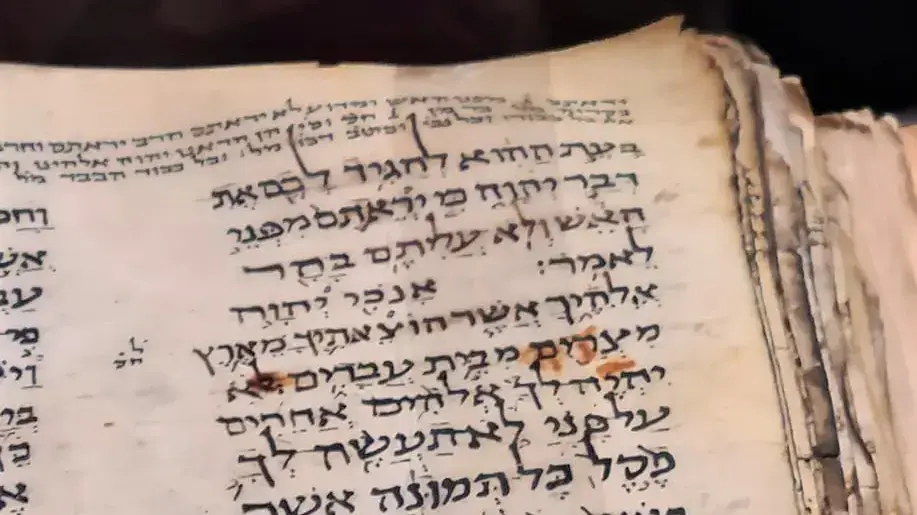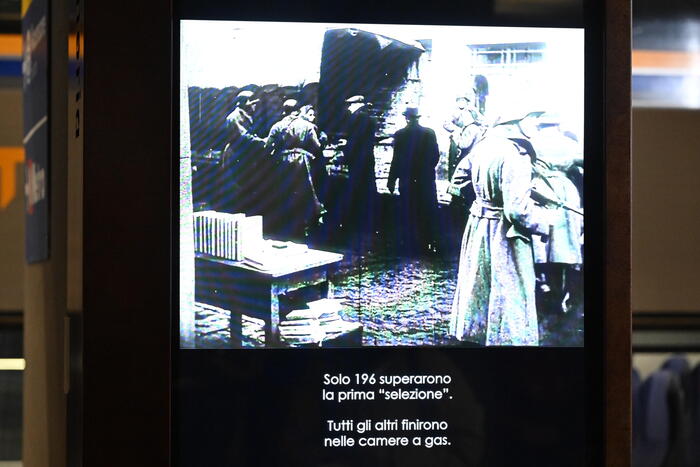Keter Sasson, the oldest surviving Bible (courtesy of ANU Museum)
The Sassoon Crown, the oldest surviving near-complete Bible, was sold Wednesday night at Sotheby's for $38.1 million to the ANU Friends Association, JNS reported. According to the report, the book was purchased with the help of a generous donation from Alfred Moses, the former US ambassador to Romania, and will be on permanent display at the ANU Museum in Tel Aviv, the former Beit Hatfutsot, which exhibited it briefly two months ago.
The Sassoon crown is more or less the same age as the famous Aram-Tsuba crown written in the tenth century CE, and probably also slightly older than it - carbon-14 dating even suggests the end of the ninth century as the possible date of writing - but its condition today is better and more complete than it and anything found from older times. The codex includes all 24 books that make up the Bible, except for the first ten chapters at the beginning of Genesis and more pages lost along the way.
The oldest surviving complete Bible. Keter Sasson (Photo: Ziv Reinstein)
The history of "Keter Sasson" is not entirely known. It was written in Palestine or Syria on sheepskin cards for at least two years, and sold several times. At some point, probably around the 13th century, it reincarnated in the town of Makisin in present-day northeastern Syria. The apparently wealthy Jewish community held the book until it was destroyed, and almost nothing else is known about it. The book resurfaced in the 20s, when David Sliman Sasson, the most important collector of Jewish books ever, purchased it for £20.
Sasson, after whom the document is named, came from a wealthy and privileged Iraqi Jewish family who devoted his life to collecting and researching ancient Jewish manuscripts. In his hometown of London, he established a library of more than a thousand manuscripts from all over the world – from Ashkenazi communities in the West through North Africa and Yemen to India – until his death in the 350s. Sasson's descendants held the manuscript until 40. While several prominent books from the collection made it to the National Library of Israel, Keter Sasson was sold to the British Railway Workers' Pension Fund, which in turn sold it in the late 20s to an anonymous private buyer, who soon sold the book to Jacqui Safra, a Jewish businessman living in Switzerland. Throughout all these years, the eyes of the public hardly tanned him. In recent decades it has been exhibited to the public only once, some 1978 years ago, at the British Museum.
- culture
- literature
Tags
- Bible
- ANU - Museum of the Jewish People



/cloudfront-eu-central-1.images.arcpublishing.com/prisa/H4OQQFWP7M2WIJYAVWO45FAOKI.jpg)










